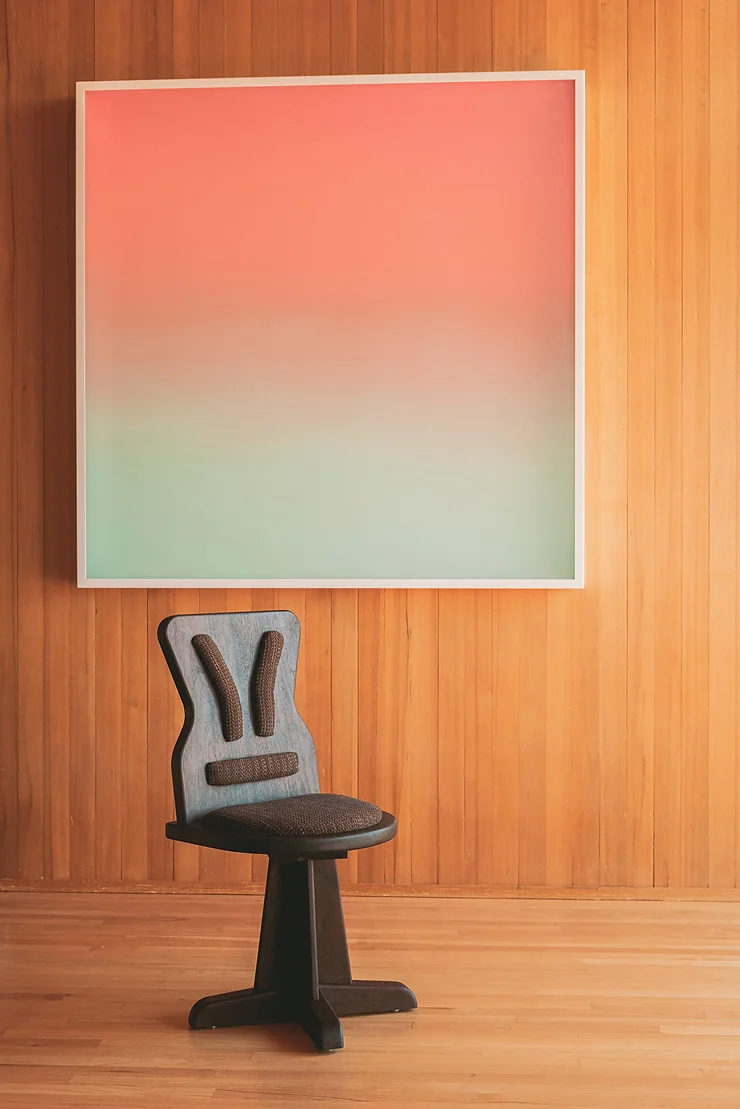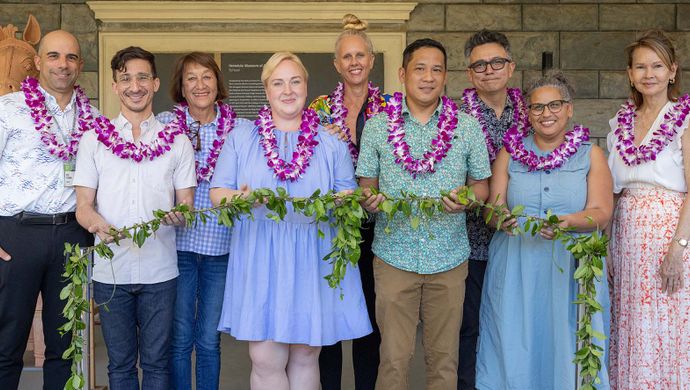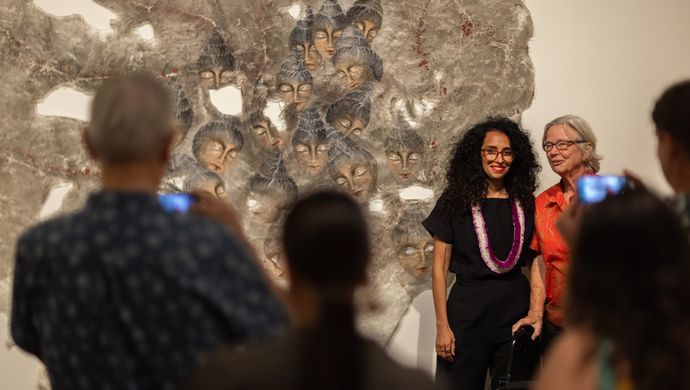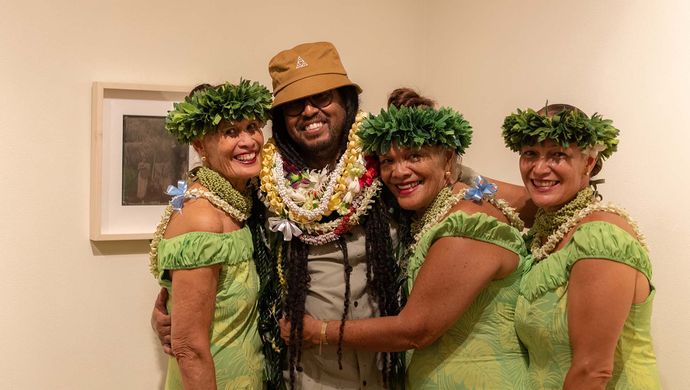Cedric Hudson: Design as message
As part of programming for the exhibitions Forward Together: African American Prints from the Jean and Robert Steele Collection and Fashioning Aloha, Hudson takes the Doris Duke Theatre stage for In Conversation: Designing for Change with Kūha‘o Zane and Cedric Hudson on Friday, Aug. 30.
Works in both exhibitions address cultural identity, social justice, and place, and Hudson and Zane will share their takes on leveraging design to send a message. Hudson’s career in apparel design has seen him working on Adidas’ Hoops and Yeezy lines. Based in Los Angeles, Hudson is VP of Men’s Design at Fabletics.

It was Hudson’s search for furniture for his home that led to his acclaimed collaborative project with designer Ben Boutros of Portland-based furniture brand Bennu. The Greensboro chair does double duty as beautiful contemporary design and commemoration of the 1960 sit-ins in a Woolworth store in Greensboro, North Carolina. The series of nonviolent protests saw activists and college students Joseph McNeil, Franklin McCain, Ezell Blair Jr., David Richmond and others taking a seat at their local Woolworth lunch counter, where they were refused service. Lasting six months, the protests led to Woolworth ending its policy of racial segregation at its lunch counters, and spurred the youth-led movement to challenge inequality in the South.
As a preview to his upcoming talk, Hudson took time to speak with HoMA about his design philosophy.
How did the Greensboro chair project come about?
I had done a side table that I created. It was something I wanted to explore when I bought my home in 2018. I was looking for pieces for my crib and I just couldn’t find anything. I jumped into Illustrator and started playing with shapes, and I landed on a visual that I was really into and started exploring that. I made a three-quarters scale model and started to try to understand how I could make the piece. In Portland there are a lot of resources in terms of making things. I went through this process and I made one for a friend of mine. It was a great expression of everything at the time—it was 2019. In our industry, being a man of color in the space sometimes means you’ve got to make your own table. The name was Curatus, which in Latin means “arranged, taken care of.” Other meanings are “healed and cured.” It spoke to a lot of things that were happening, and was kind of a cathartic process for me.
That was how the Greensboro chair came about in 2020, people getting killed by police—it wasn’t anything new, but it came to a head with George Floyd. One day it hit me, I was thinking about the sit-ins and I contacted Ben Boutros, I hit him up. I told him I think I have a dope idea for a piece. The [Greensboro] people were freshmen, maybe 19 if that, and they literally used a piece of furniture to change the course of history. How can we tell this story of a piece of furniture? When you look at the industry, typically there’s no story other than materials and technique. Jomo [Tariku] starts to hint at that—a Black man that creates incredible pieces. [Boutros] loved the idea so we started working on it, sketching, and landed on Peruvian walnut. It has a dark brown chocolat colorization and for obvious reasons we wanted to go that route. We continued to play. The tweed we chose for the padding we thought captured the essence of the Woolworth barstools, and some of the framework integrated with the padding. We wanted to make sure it swiveled. We made plywood versions first to test it out. From there we made our official piece.
You submitted the chair to the 2021 Gray Awards, which recognizes projects in architecture, interiors, landscape and product design—and it won furniture/lighting category. What was that like?
It was amazing. It affirmed the vision, affirmed what my ancestors went through, the brutal racism, and how they survived it. It was a super emotional awards ceremony. My brother Jairus Hudson wrote it up, we got featured in Gray Magazine. It was an awesome time to lift up everybody involved in the project.
I’ve had a lot of success in apparel in different ways, but my big moment was this chair. It made me multidimensional as an artist, not a one-note—I got a great bridge, an outro. People didn’t know about [the Greensboro] story. Education through design is so important.
What is it about design that makes it a powerful platform for change?
Everybody is creative. I like to use the saying, somebody can make you a great dish but if they plate it badly, it can be unappealing, no matter how delicious it is. If you plate it differently, people will be interested. That’s why you have a lot of great designers and artists, like Basquiat, who have figured out ways to tell a narrative in a way that people see someting so beautiful, then as they eat different parts of the meal, their mind can be blown. You can take your time—that is the beauty of using design as a vehicle for activism and education.
Are you able to express elements of social change in your corporate design work?
It depends on the company, and what they want to say. It’s not just about you. It’s a big reason why I have my platforms outside of my work. You have to balance creativity with running a business. Sometimes it’s not activism, but sharing knowledge in terms of cultural or sports moments, which is also pretty awesome. In 1975, Lee Elder was the first Black man to play in the Masters, to set foot on the course as a competitor, not a caddie. There is a cool picture of him in a golf cart, so [at Fabletics] we created a hoodie paying homage to that moment.



 Interview
Interview


